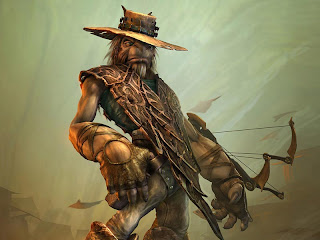Hi, my name is Andy Bailey and I am currently studying Digital film, Games and Animation at Leeds College of Art. I am primarily interest in conceptual art for games but I am also enjoying learning about various other medias (Film Production, 3D Modelling and Animation). Please feel free to comment and give feedback. Constructive criticism is much appreciated :)
Sunday, 12 February 2012
The Unnamed Protagonist
I recently watched the movie 'Drive' by Nicolas Winding Refn. The film was about a stuntman and mechanic, who also worked as a getaway driver. This loner character meets a woman and her child, their husband and father in prison. The father is released, and the protagonist seems grow close to the family. When the husband is killed in the process of earning back his freedom from a crime boss associate, the main character takes matters in to his own hands. One of the strongest points of the film in my opinion, was the decision for the protagonist to be kept unnamed. Throughout the film, the mysterious main character's name was never given. He is referred to in other media, such as web articles, as simply 'driver'.
Reflecting further on why this decision was so effective, I was reminded of the famous Spaghetti Western 'Dollars' trilogy, and 'the man with no name.' In the famous western trilogy Clint Eastwood plays a bounty hunter, who moves from town to town. Like the 'driver', Clint Eastwood's character has no real ties. We are never introduced to any of his family members, and his background is never really touched on. The Character's in both 'Drive' and the 'Dollars' trilogy are highly mysterious. They are generally stone faced, and keep their dialogue very limited and to the point. They are both highly skilled in their trade (Gunslinging in the case of Eastwood's character), but never speak of their talents or boast. They often fashion a signature look, 'the man with no name' wearing a poncho, the 'driver' a stylish white jacket with a scorpion logo on the back.
Another similarity I noticed, which perhaps could be more than just coincidence, is the way that both characters hide their hands and arms from view. Eastwood hides his hands and arms beneath his poncho, and the 'driver' keeps his hands in his jacket pockets. Even when the 'driver' has his hands on the steering wheel, they are shielded by driving gloves. I believe our hands could be seen as an intimate part of the body. contact with others is often made through engaging in a handshake, or through embracing someone in our arms. When the unnamed characters keep their hands so much to the themselves, I believe it creates the effect of distance and reclusiveness. This idea of masking parts of the body to achieve distance, is taken to the extreme in 'Drive'. For one of the 'driver's' Hollywood stunt roles, he is required to wear a face mask. When the stunt car driver decides to hunt down one of the men who threatens the lives of those who have become dear to him, he puts on this mask to shield his identity, or perhaps even just to frighten his target. As the 'driver' stalks the enemy, the mask he wears looks cold and emotionless.
So why do the narratives of these films put so much emphasis on the protagonist being distant and mysterious? My view is that when the main character remains unnamed with no clear background, we can attach our own back story in our minds, that we can relate to. The character almost becomes a shell that we can step inside. In this sense we can almost place ourselves inside the story. One media this style of protagonist works effectively in is game. I remember a very powerful video game in the sense of style and narrative: 'Oddworld: Strangers Wrath.' where the player followed the story of 'the stranger'. The approach was done in the vein of the 'Dollars' trilogy, where 'the stranger' moved from town to town in the search for outlaws and bounty. Again we could relate to the unnamed protagonist, as we were 'strangers' in this virtual world. We didn't feel so much that we were watching the story of another unfold, but that we were living out the campaign. I imagine this is what game developers inevitably aim to achieve, which is likely why this particular type of protagonist worked so well for the 'Oddworld' franchise.
The Origins of 'the stranger' however, did eventually unfold. In that sense, the player never really had ultimate control over the narrative of the game, despite the presence of this indefinite character. Perhaps the unnamed protagonist is only used as a tool to engage us and generate curiosity. We as the viewer or player, may never truly be able to apply our own influence in to how we perceive a piece of narrative. It is likely only the writer or director who can ultimately piece the story together.
Subscribe to:
Post Comments (Atom)


No comments:
Post a Comment